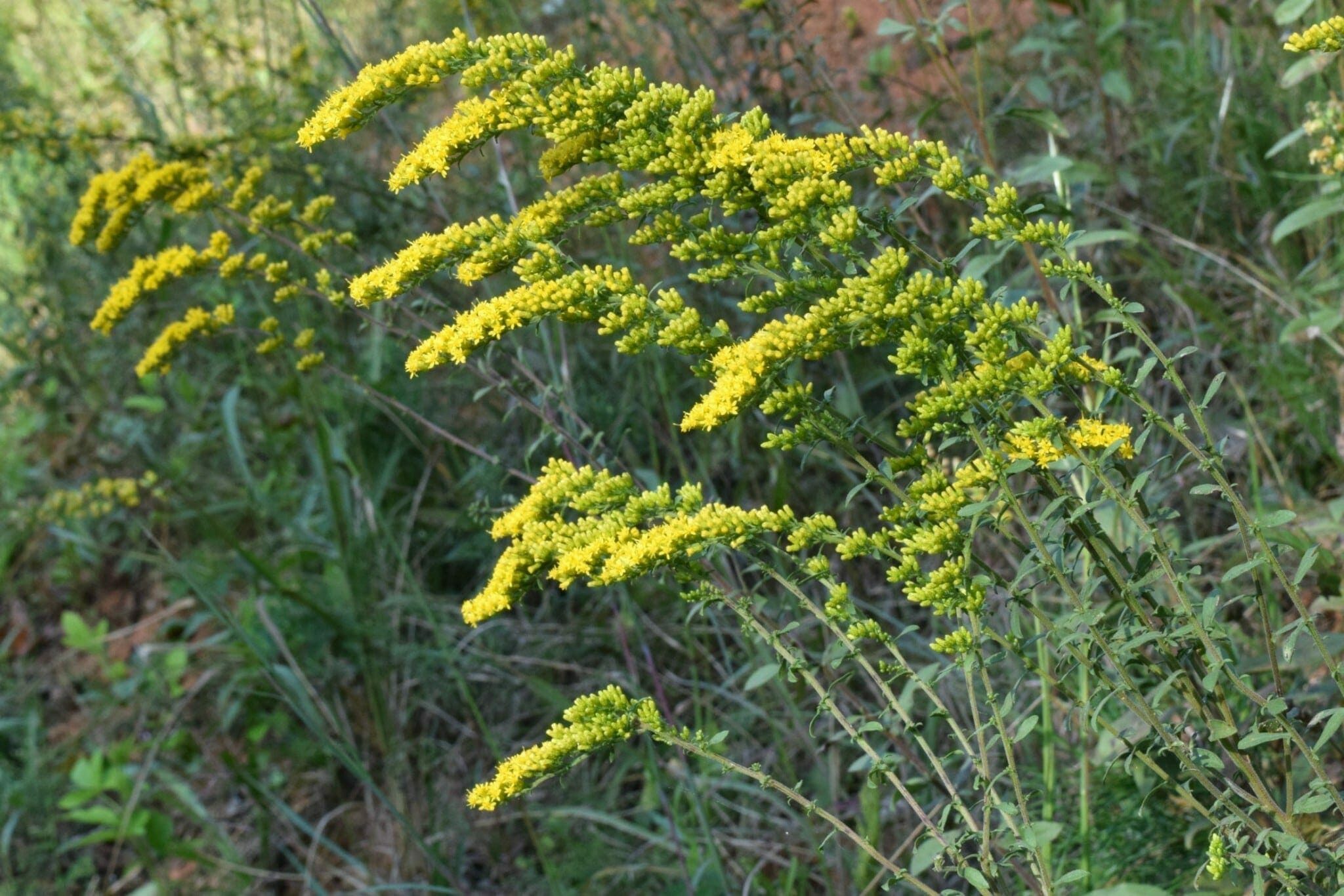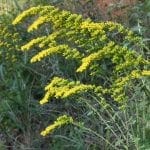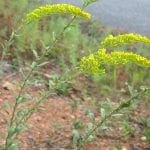- Habit of inflorescence with slightly crooked look
- Gray foliage
- Close up of individual flowers
Scientific Name:
Solidago nemoralis
Common Name:
Gray Goldenrod
Scientific Name Pronounciation:
so-li-DAY-go nem-or-AL-is
Plant Type:
Perennial
Plant Hardiness Zones:
3-9
Plant Hardiness Zone(s):
Usual Size:
1 1/2 W to 2 ft H
Flower:
Flowers occur on the upper side of hairy stalks which arch out and downward creating a vase-shaped inflorescence.
Bloom Time Notes:
Fall
Leaf:
Alternate, grayish leaves are sessile, sharply to finely serrate
Fruit:
A seed.
Wildlife:
Used by long-tongued bees, short-tongued bees, wasps, flies, beetles, and butterflies. The caterpillars of many moths feed on the foliage.
Natural Habitat:
Dry areas and fields.
Propagation:
Seed, division.
Bloom Time:
Sun or Shade:
Companion Plants:
Cultural Notes:
Gray Goldenrod (Solidago nemoralis) is a garden worthy goldenrod thanks to its clumping nature. Unlike Solidago canadensis, this perennial does not grow by rhizomatous roots and is not aggressive.
Contrary to popular belief, goldenrod is not a source of fall allergies because its pollen is not light enough to be transported on the wind. Goldenrods are insect pollinated and highly sought after by native bees and butterflies for pollen and nectar. Fall allergies are associated with wind-pollinated plants such as ragweed (Ambrosia artemisiifolia), an annual plant with greenish flowers that is often unnoticed.
Other Common Names: Field Goldenrod, Grey Goldenrod, Dwarf Goldenrod




